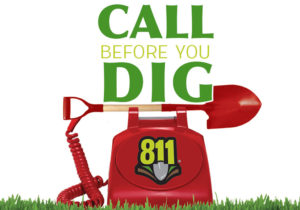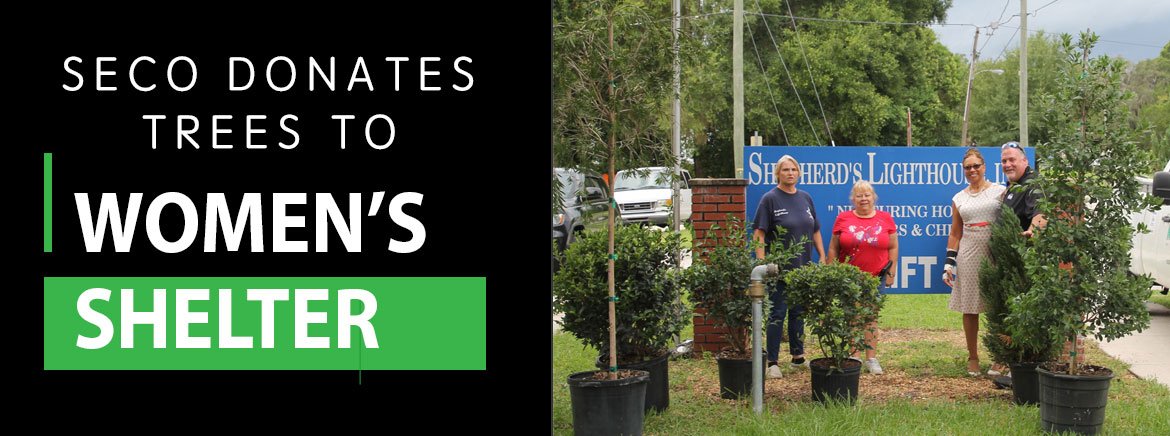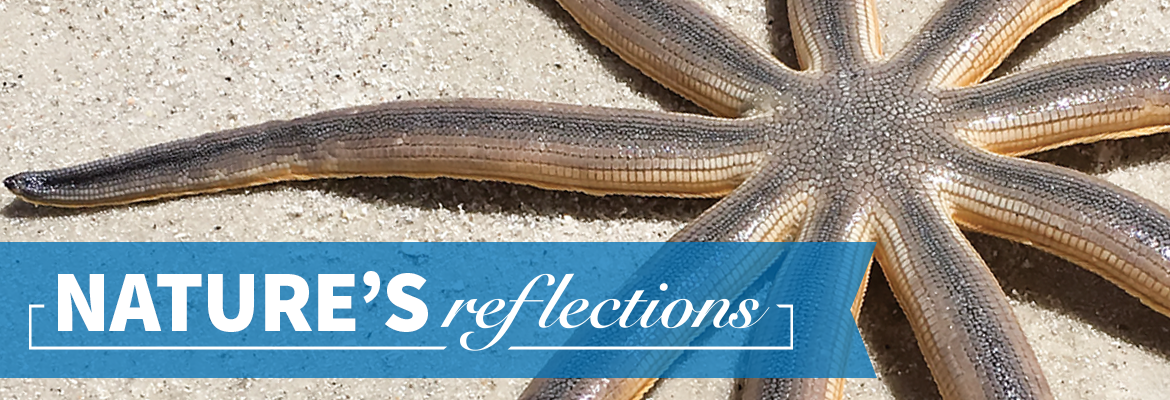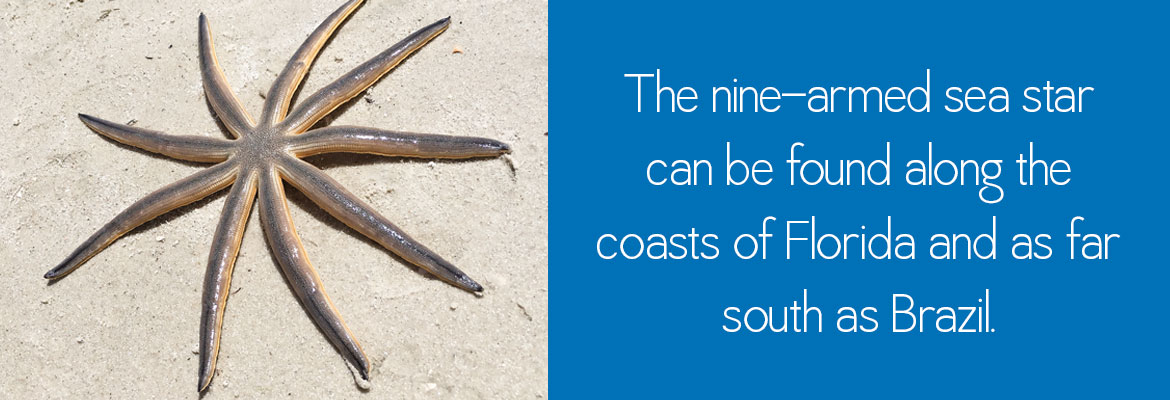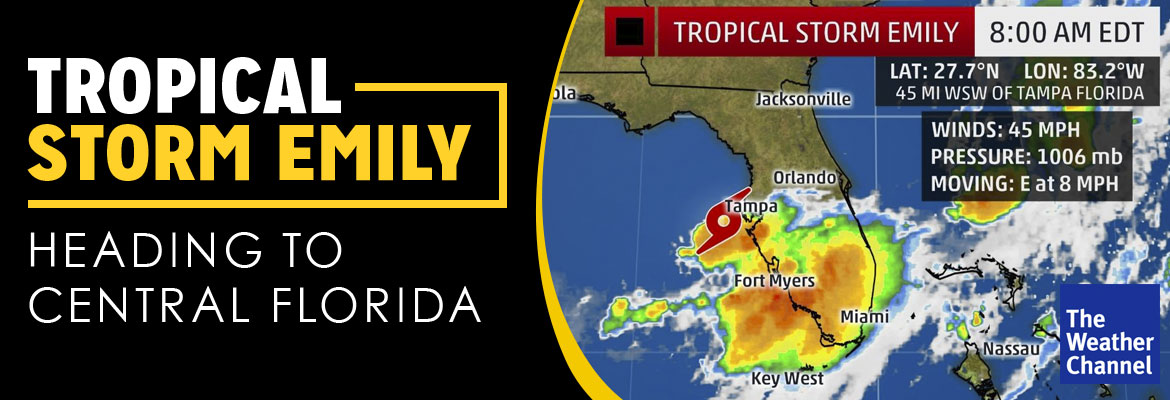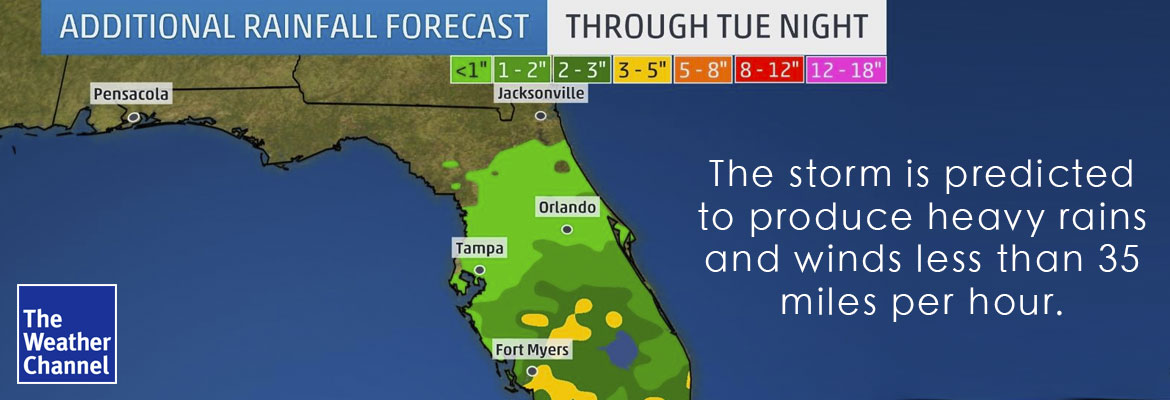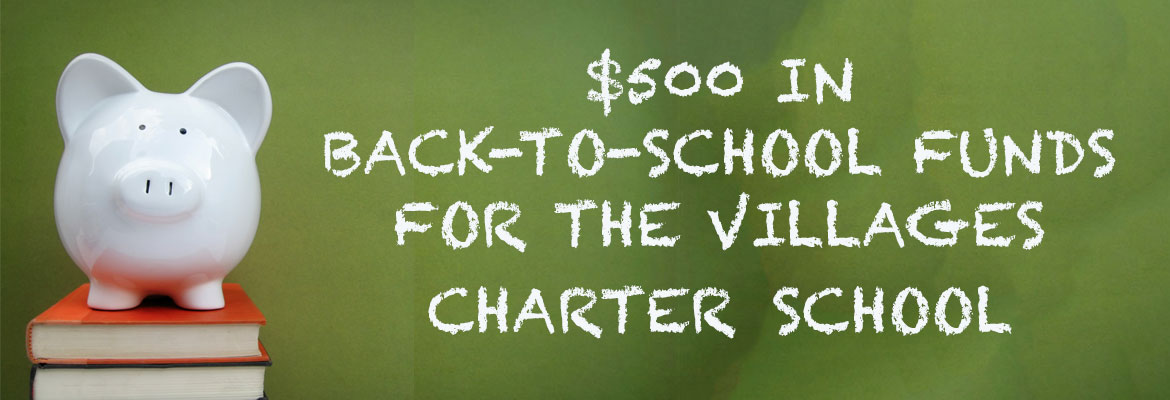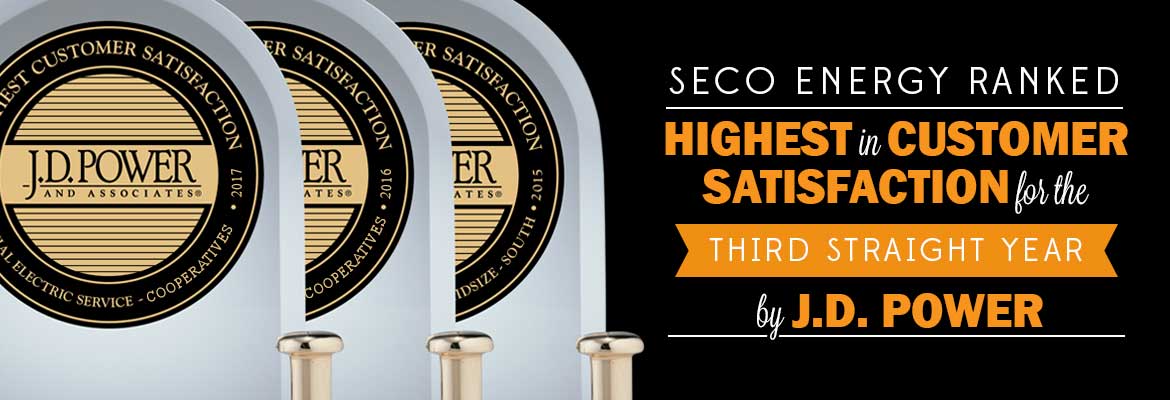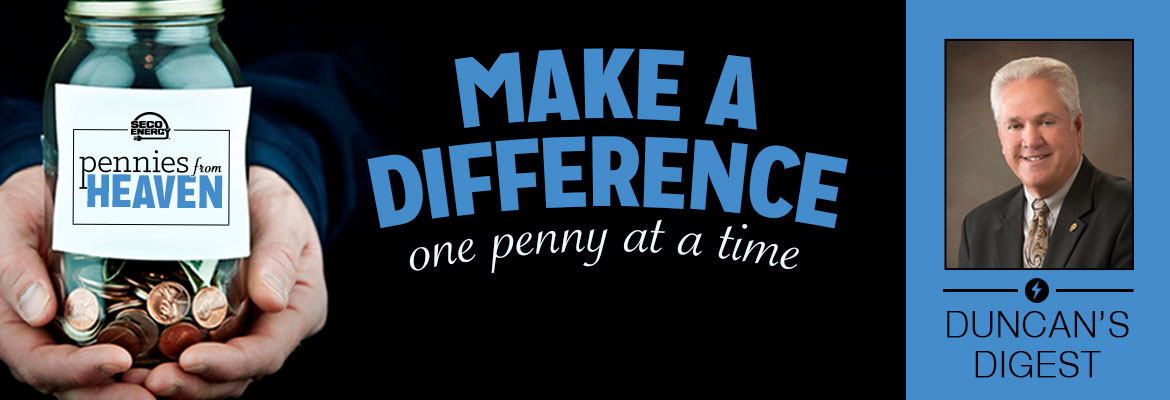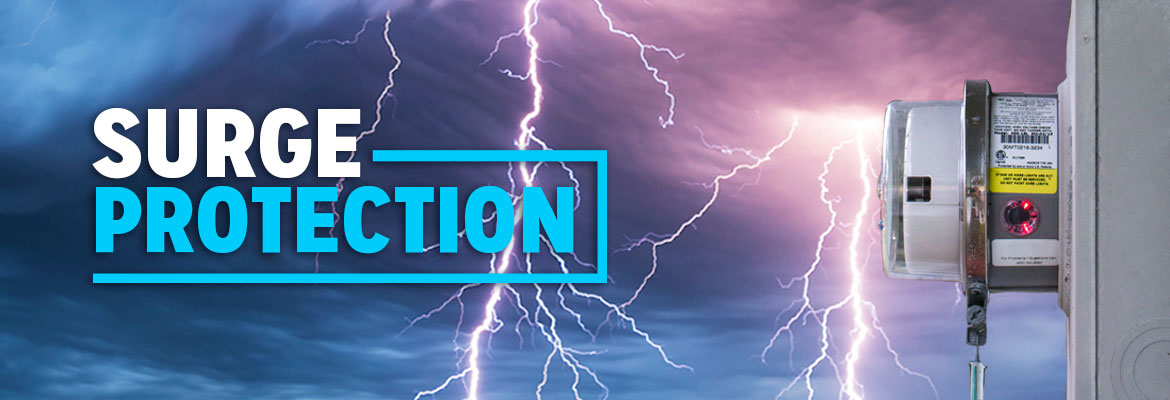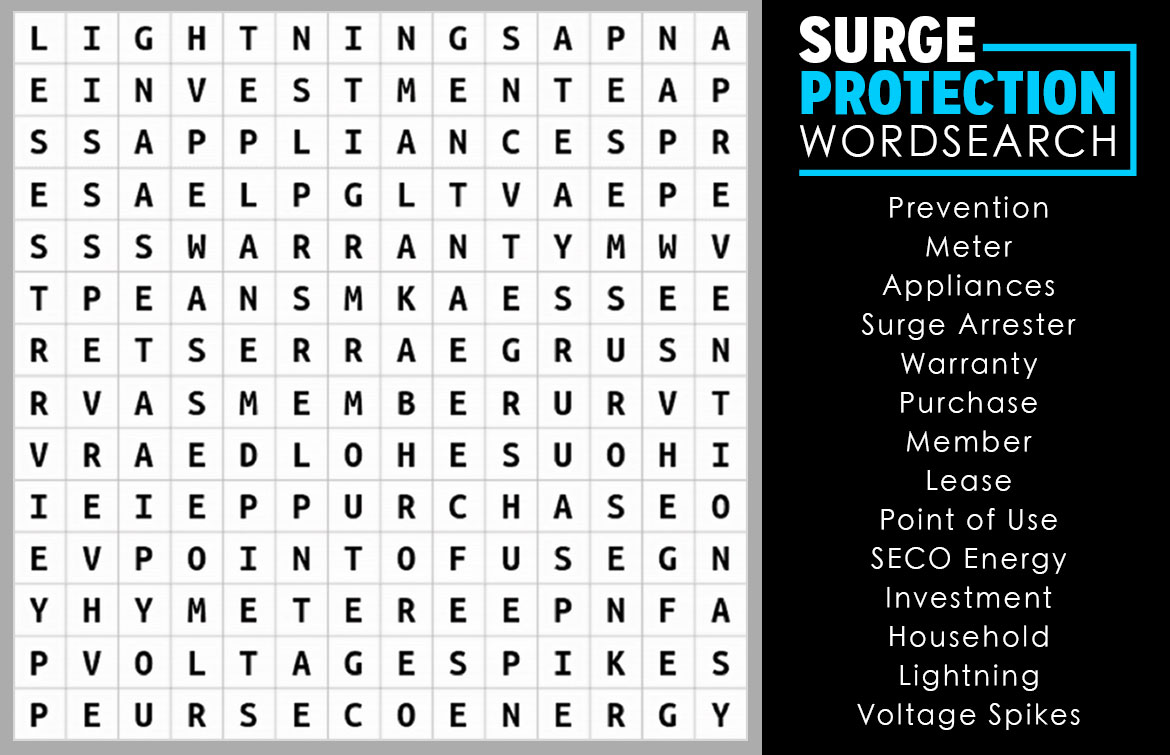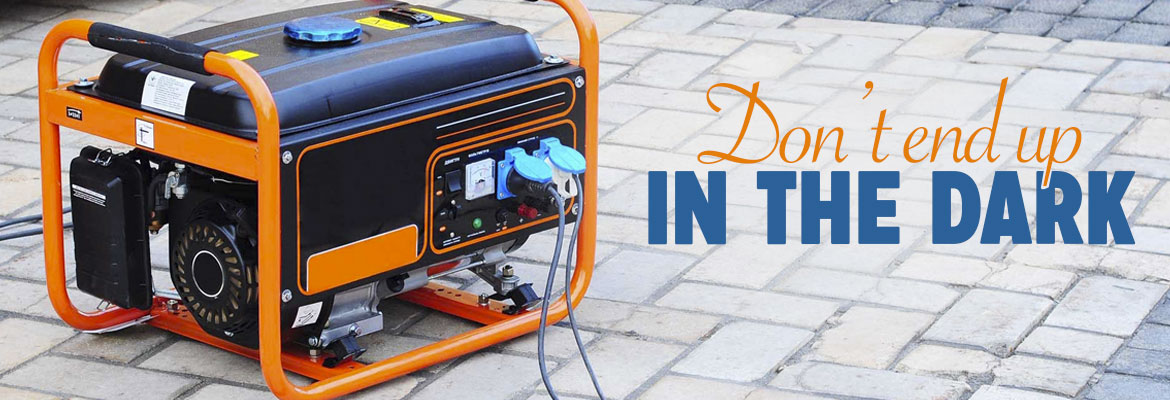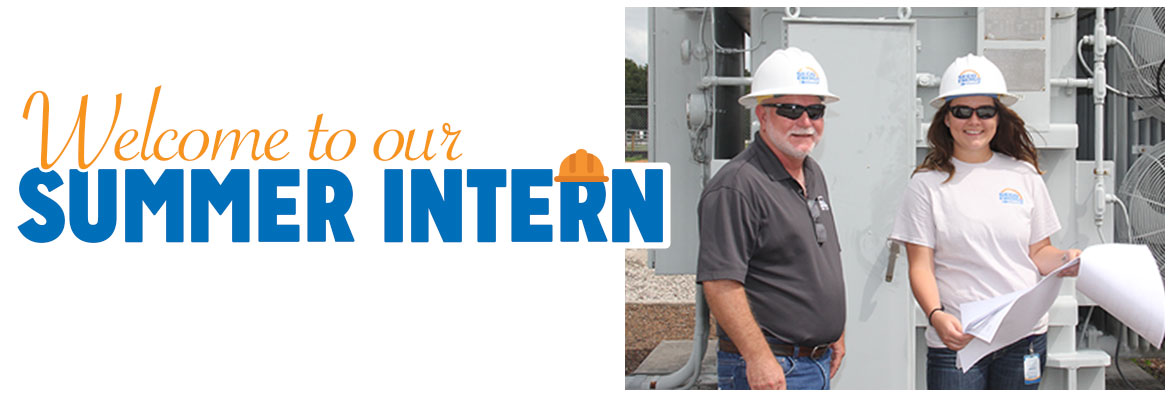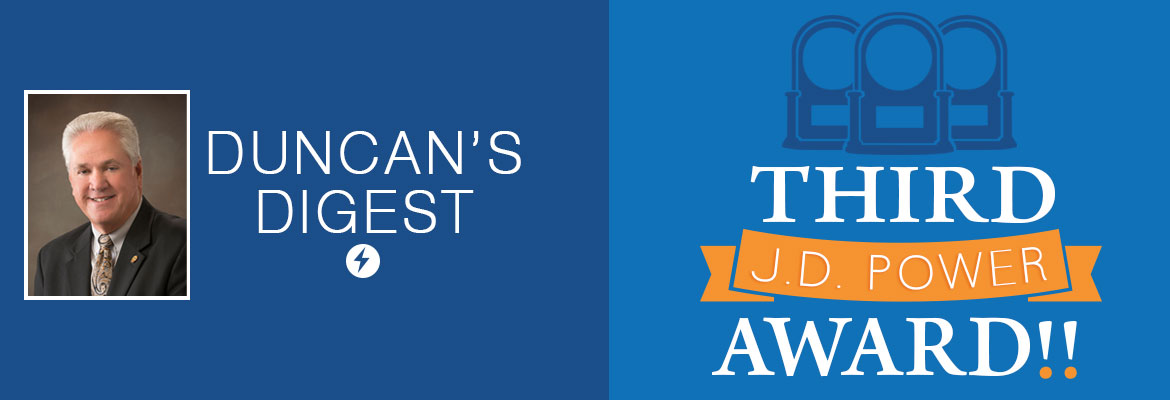
Duncan’s Digest
Third J.D. Power Award!!
Thank you, members, for honoring SECO Energy with a third J.D. Power award. J.D. Power’s 2017 Electric Utility Residential Customer Satisfaction Study, has once again ranked your not-for-profit electric cooperative “Highest in Customer Satisfaction among Electric Cooperatives.” Our 2017 trophy marks a three-year streak of J.D. Power awards for SECO Energy’s customer satisfaction.
In 2015, J.D. Power named SECO “Highest in Customer Satisfaction among Midsize Utilities in the South.” The next year, J.D. Power placed cooperatives in a separate category and the cooperative set its sights on another win. We accomplished our original goal with a second win in 2016. And this year, we far exceeded our original goal with a third win, gaining the top spot and earning our “Triple Crown.”
The J.D. Power study measures customer satisfaction with electric utility companies by examining six factors:
- Power Quality and Reliability
- Price
- Billing and Payment
- Corporate Citizenship
- Communications
- Customer Service
SECO’s 2017 overall score is an incredible 789, which is a 20-point increase from our 2016 score.
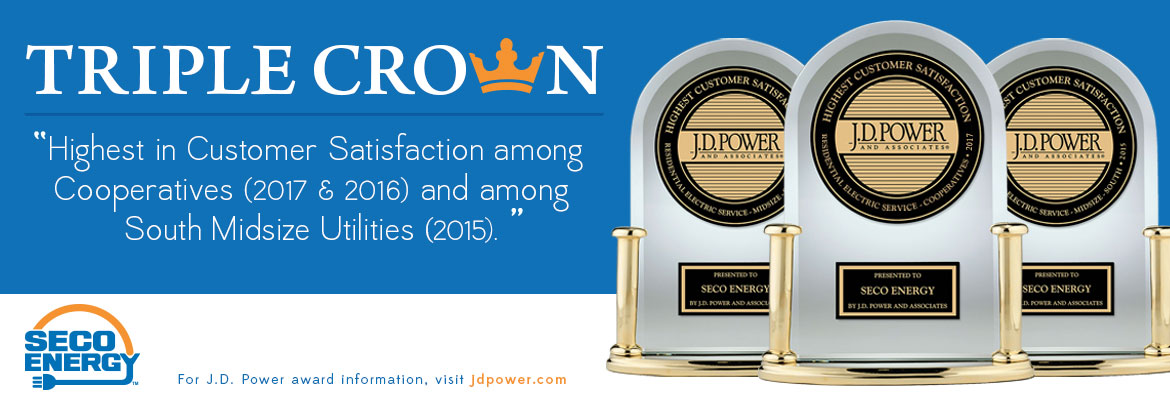
How does SECO continue to rise above the competition and retain its customer satisfaction crown? The quick answer is the 400+ employees who make SECO the nation’s top electric cooperative. SECO employees are the best in the state, if not the nation. Our local employees are your friends, neighbors and family. SECO employees are the heart of the cooperative and without them, awards and recognition wouldn’t be possible.
I am beyond grateful for our employees and their dedication to not only customer satisfaction, but their dedication to our members. I am also thankful for the forward-thinking vision of our executive leadership team and the SECO Board Members who oversee the governance of the cooperative.
This third J.D. Power award culminates a decade-long effort to increase reliability, maintain low rates and provide world-class customer service to members. I am humbled by the praise and goodwill from our members and privileged to be employed by the best electric cooperative in the country.
Sincerely,
Jim Duncan
Chief Executive Officer
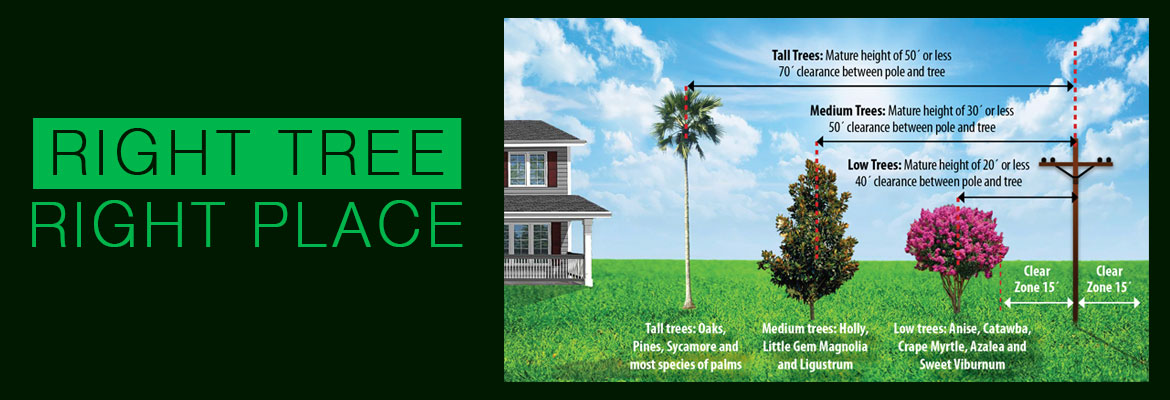
Right Tree Right Place
Trees interfering with power lines are a leading cause of unexpected outages. When trees contact power lines they can create sparks, fires, shock hazards and as mentioned previously – power outages. To avoid these problems, SECO has developed a holistic Vegetation Management program that includes regular tree trimming and educating members about how trees save energy and reduce monthly bills.
Don’t plant trees close to power lines. Consider how tall the tree will be when it is mature. Plant small ornamental trees or shrubs at least 15 feet away from lines and plant the tallest trees at least 70 feet away. That small oak sapling planted today may one day grow into a majestic live oak towering 80 feet in the air.
SECO also encourages members to plant the right tree in the right place to reduce annual energy costs. Planting deciduous trees to the south, southwest or west side will provide your home with shade during the summer, which reduces your cooling costs. To reduce heating costs, plant evergreens and shrubs on the north and west sides of your home to block winter winds.
Learn more about how trees can reduce energy costs and tree planting ideas at SECOEnergy.com.
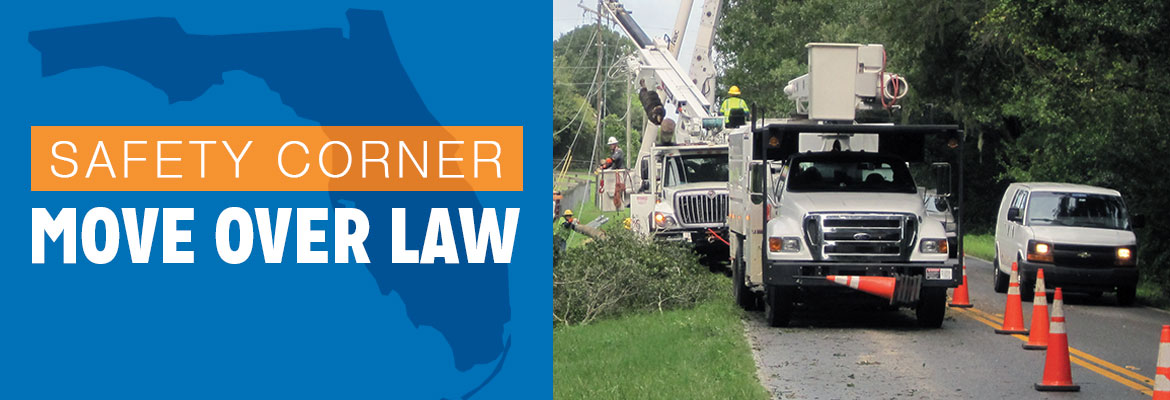
Safety Corner
Move Over Law
When you see an emergency vehicle, tow truck, sanitation crew or utility vehicle on the road shoulder with lights flashing, do you reduce your speed or move over a lane?
You should. In fact, under Florida’s Move Over Law it’s mandatory. Utility workers, law enforcement personnel, EMTs and sanitation workers are at risk of being injured or killed by vehicles traveling at high rates of speed when working on the road shoulder.
SECO technicians routinely park near roadways and are particularly vulnerable to careless/distracted drivers who cause accidents. It is common to see a SECO Energy line technician replacing a pole or repairing lines while inside a bucket that is 40 or 50 feet aloft. Oftentimes this mid-air roadside work takes place in the dark and during thunderstorms. Technicians are focused on their assigned tasks and working safely, they may not be able to get out of the way if a vehicle crashes into their work area.
On a multi-lane road, the Move Over Law requires drivers to move over a lane away from the vehicle on the shoulder. If you cannot move over safely, the law
requires you to reduce your speed to 20 mph below the posted speed limit. On two lane roads where there isn’t a lane to move over into, the law requires you to reduce your speed to 20 mph below the posted speed limit. Drivers can be ticketed for failure to comply with the Move Over Law, which will cost you over $100, add points to your driving record and raise your insurance premiums.
Please do your part to ensure workers return home safely to their loved ones. Pay attention to the road, don’t text while driving, move over and slow down for emergency vehicles – it’s the law.

Energy Savings
Solar Window Screens
Florida summers certainly offer chances for fun in the sun, but when humidity is at 100% and temps reach the triple-degree mark, energy bills increase. The sun’s heat transfers through your windows and raises the temperature inside your home. In turn, your HVAC unit runs more often and uses more energy – thus raising your electric bill.
What low-cost step can you take to prevent heat transfer into your home? Install solar window screens. Indoor shading techniques such as curtains and blinds block light and heat after it is already inside your home. Solar screens fight heat transfer through your windows on the outside of your home. These screens are designed to reflect up to 90% of the sun’s heat and glare before it enters your home without compromising visibility. Solar screens also provide a level of daytime privacy by preventing outsiders from peeking in your windows. The heavy screens provide a level of bug protection as well.
Solar screens come in a variety of colors to complement the aesthetics of your home. Visit our website for additional tips to reduce energy usage and lower your monthly bills.
Read the full August 2017 SECO News here.

